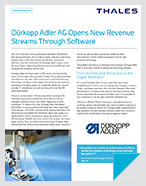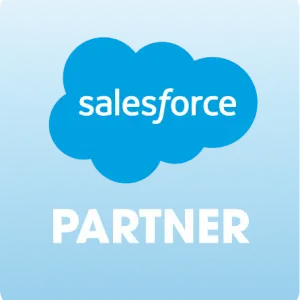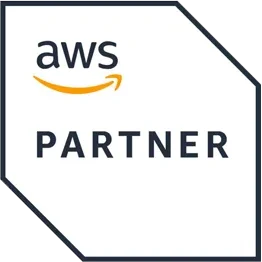Software license compliance is a fancy way of saying legal software use. This is something that both software vendors and enterprise software consumers need to take responsibility for. Otherwise, both will pay the price. Fortunately, some forward planning and a few strong tools can help keep both software companies and their customers from leaving money on the table.
What Is Software License Compliance?

Software license compliance is the process of ensuring that your company is only using software it is authorized to use. The most fundamental part of this process is comparing the way an organization is using software to the software licenses that the organization has purchased. This involves tracking installations and usage, keeping meticulous records, and understanding the terms of software licenses.
For software companies, maximizing software license compliance means keeping an eye on your clients. This can be done through client audits and by reviewing your own data. But the work doesn’t have to all fall on the vendor. With thoughtful licensing structures and open lines of communication, you can help your customers to stay compliant without threats or inspections.
Why Software Licensing and Asset Management Is Critical to Your Business
If software license compliance is the goal, asset management is the ongoing process you use to reach it. Companies that neglect software compliance management can end up paying a steep price in both cash and lost opportunity.
The Cost to Software Companies
First and foremost, software licenses protect the companies that make software solutions. Particularly with enterprise software, most piracy isn’t malicious theft. In a lot of cases, it’s simply confusion or laziness. Unauthorized software users are just potential customers that have fallen through the cracks.
These untapped customers can cost more than simply missed software monetization opportunities. You may be providing service for users who aren’t paying or your brand image may be taking a hit for software problems that aren’t your fault. Enforcing software license compliance not only protects your revenue streams, it also protects your reputation and the integrity of your intellectual property.
The Cost to Users
Software asset management and compliance are just as important for software consumers as providers. Without a strong software compliance strategy in place, IT departments and CIOs often don’t even know what software is in use in their organizations. As software providers begin enforcing compliance more rigorously, companies that aren’t prepared can pay steep fines for unlicensed software.
However, the software license compliance process yields some side benefits as well. Comparing the software you’re using to the software you’re paying for can reveal all sorts of inefficiencies. You may find that you’re paying for more licenses than you need or that a different pricing packaging will be more cost-effective. Good record-keeping and internal auditing are the best ways to maximize your software budget while avoiding compliance fines.
Mastering Software Compliance: License Types
Before you even get to pricing models, you run into 4 types of software licenses that are freely available, or open-source. All of these allow anyone to access and, to varying degrees, reuse the software code.
1. Public Domain – This is available free of charge to anyone who wants to use it, for any purpose. It can be studied, modified, and repurposed, all for free.
2. Permissive – This software is open to the public and has just a few restrictions on how the software can be used or some regulations designed to maintain copyrights and trademarks.
3. Copyleft – Also known as restrictive licensing, this license type defines how the software can be used in new applications. Specifically, any software that carries code from the copyleft software must have the same licensing restrictions attached. For example, if the original software could not be used commercially, the software that uses it also can’t be for commercial use.
4. LGPL - GNU Lesser General Public License – This license allows you to use source code freely, but the software must state that the source code has been modified, that the software is covered by this license type, and that any software using the new code must also use LGPL.
All paid licenses belong in a fifth category: proprietary software. Proprietary software is protected intellectual property that cannot be redistributed, modified, or reused without permission.
Once you’re talking about proprietary software, the number of license types is endless. Every software developer can customize their pricing model and define exactly how their product can be used by employees or customers. However, proprietary licenses can be broken down into a few common pricing models. Here are some terms that help define software licenses:
- Subscription licensing – temporary licensing that has to be renewed at set times, as opposed to perpetual licenses which are one-time costs
- loating/network license – gives a large group of users a limited number of licenses to share between them
- Device/workstation licensing – limits the license to a particular computer, no matter who is using it
- Named vs. concurrent users- named licenses allow only specific users no matter who else is using the software, as opposed to concurrent licenses which allow a limited number of simultaneous users within an organization, no matter who they are
- Metered/pay-per-use – consumption-based licensing fees, with software that automatically records the number of uses or time used
- Featured licensing – a software license that limits the number of features used or the number of times particular features are used

How Software Companies Can Encourage Compliance
Minimizing unauthorized use of your software is about more than just audits and enforcement. By setting up the right infrastructure, you can make it easy for your customers to be compliant and make your work a lot simpler.
Pricing Packages
Offer a wide variety of pricing packages and licensing models to match wide-ranging customer needs. Packages that cater to different size companies in different industries will help to ensure that businesses aren’t forced to pay for a lot of licenses or features they won’t use, encouraging them to pay for the ones they do want.
Communication
Make sure customers know when their subscriptions need renewing and keep them updated on new features or changes in the licensing terms. They should also have an easy way to reach you. If your customers can tell you what they need, you’ll be able to find the licensing model that makes the most sense for them.
Customer Data
Even without one-on-one communication, you may have a lot of information about how your customers use your software. Keep track of company growth, changes in workflow, and subscription renewal periods. These are all opportunities for you to offer new pricing packages that encourage software licensing compliance, and maybe even do some upselling and cross-selling at the same time.
License Compliance Software
The right license management software is the key to all the previous steps discussed here. Compliance management software is designed to ensure that only licensed users can operate the software. Tools like Sentinel license management solutions enable a wide variety of business models and make it easy to switch between them and to scale up or down as needed.
License Compliance Audits
Whether as part of routine audits or as a response to red flags, most major software publishers audit their customers regularly. For the vast majority of companies, these audits are conducted by external consultants although some rare providers do operate their own internal audit departments. However you choose to do it, a software audit is still one of the most effective weapons in your compliance arsenal.
How Software Users Can Make License Compliance Easy
Building a strong foundation from the beginning is the key to software license compliance over the long term.

Understand License Terms
Review all software license agreements in detail and continue reviewing them every time the software is renewed. In most cases, only the IT department or CIO will need to know the terms, but a lawyer can help ensure the agreement is clear, and sometimes it can be helpful to keep the users in the loop.
Define and Implement Policies
Compliance is not something you should be making up as you go along. Create clear protocols for choosing, purchasing, installing, and keeping track of software and ensure all relevant employees know them. Very small companies may be able to get away with a spreadsheet and manual record-keeping, but in most cases, specifically-designed software is a better bet.
Compliance Management Software
There are lawyers who specialize in negotiating software licensing agreements. If you’re using software on a large scale, they can help you get a contract that is both cost-effective and easy to comply with. In most cases though, you’ll be turning to compliance management software instead.
Compliance management software tracks all the information that could influence your license compliance. Compliance software pricing varies depending on quality and features. Besides streamlining record-keeping, it can notify you about expiry dates, monitor usage for metered software, and track different versions of the same software. Most importantly, it can help you conduct internal audits. By using compliance management software you are automating as much of the compliance process as possible, which will save you time and money in the future.
Internal Software License Compliance Audits
The best way to avoid a software provider audit, or at least to get through unscathed, is to regularly audit yourself. Most of the major asset management and license compliance software can do this for you and outside service providers can also help. In some cases, giving software providers the report from your self-audit can be enough to keep them from auditing you in the first place. Even if this isn’t the case, you’ll be prepared and the external audit won’t find any problems.
Whether you’re a software publisher or consumer, ensuring license compliance is a basic and integral part of running a business. Setting up the right infrastructure and taking advantage of all the tools available, will ensure it happens smoothly and with minimal effort. Visit Sentinel to find out more about how to streamline software license compliance today.

Navigate The Process of Licensing, Delivering, and Protecting Your Software - White Paper
How to Get Software Licensing Right The First TimeCheck out our practical guide to navigating the process of licensing, delivering, and protecting your software. Discover the importance of optimizing your software licensing. Avoid common mistakes with the expertise you...

Create New Software Licensing Revenue Streams - DürKopp Adler Case Study
Create New Software Licensing Revenue Streams like Durkopp Adler - Case Study DürKopp Adler AG Opens New Revenue Streams through Software You won’t find many more quintessential examples of hardware than sewing machines. Still, in today’s world, software is becoming...



